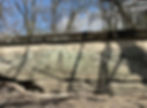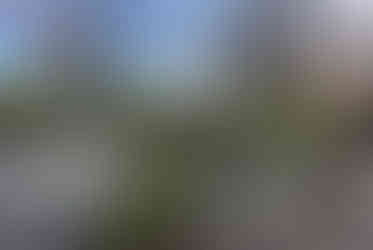Writing on the Wall: J.H. Kroh and the Construction of the Fall Creek Wall
- Ed Fujawa
- Apr 16, 2022
- 6 min read
A few weeks ago, I went on a kayaking trip down Fall Creek through the northside of downtown Indianapolis. Part of the reason for this was to get a few final images for the immediate past blog posting about the Fall Creek Aqueduct, but also because I enjoy paddling on the waterways around Indianapolis. And the weather on that late March day was too nice to pass up.
The put-in point for this trip was a park area along Fall Creek Parkway just south of 30th Street (shoot me a message if you want more information on this location). I had not paddled this stretch this early in the year before, and with most vegetation still dormant, the massive walls which line the creek through downtown are even more visible than normal. Many of these were built in the aftermath of the 1904 flood, which caused Fall Creek to push out of its banks and caused widespread damage along its course.
Not long after I went under the Central Avenue bridge, I spotted some wording carved into the wall on the north bank of the creek. Upon paddling over towards shore, I found that wording was actually a named and year:

The name J.H. Kroh is clearly visible, but from these images, the date was a little hard to read. So, I returned to the site on foot a week later and confirmed that the date is 1907. A closer view of the inscription is below. The Julia M. Carson Government Center along Fall Creek Parkway North is visible in the background.

But I’m getting ahead of myself. Who was J.H. Kroh? Turns out, he wasn’t some individual who happened to get bored while fishing on the banks of the creek, or a teenager who used the creek as a swimming hole and decided to leave their mark. James H. Kroh actually owned a large amount of land along Fall Creek at the turn of the 19th Century, especially in the area of the creek between Central Avenue to Meridian Street. Kroh lived just north of the creek at 2799 N. New Jersey, and operated the Wabash Realty Company out of his residence. He was also active in civic matters and in the promotion of the Indianapolis park system.

Following the disastrous flood of 1904, Kroh was concerned about his property along the creek being subjected to flooding, especially as the city worked on sections of its park and boulevard plan along the creek. In 1905-1906, the south side of the creek was transformed under the city's boulevard and park plan, with grassy areas, walkways, and stairways being constructed, in addition to a concrete “floodwall” which lined the creek.
Kroh and other landowners on the north bank, namely George Marott and Henry Kahn, had several concerns with their stretch of Fall Creek. First, Kroh was worried about obstructions left under the various bridges along that stretch of creek would result in flooding during the winter of 1905. In December of 1905, these landowners presented a plan to build a wall from Meridian Street to Central Avenue to the Board of Public Works in order to keep the creek from flooding. Marott told the board that his idea was to make the northern bank of the creek “one of the most attractive parts of the city.” Under their plan in addition to the wall, development would be pushed back 100 feet from the creek to allow the development of a linear park along the creek.
Approval was not immediate, and while the matter was being considered by the board, Kroh chose to take preliminary action through his realty firm, the Wabash Realty Company. On January 19, 1906, the Indianapolis News reported that Wabash Realty was accepting bids for the construction of the first section of the wall between Delaware and Talbott Streets. The company also owned the land along the creek between Central and Talbott and wanted their wall to be similar to the one on the south side. Once the wall was completed, the area behind the wall could be backfilled for a boulevard and for future development along the creek.

In February 1906, the city engineer, J.H. Miller, approved the plans for the wall, although a request from Wabash to plat the ground north of the creek for future construction was on hold pending further information. Construction on the first section of the wall was reported to have begun in late February. However, problems arose from property owners on the southern side of Fall Creek, who were concerned that Kroh’s wall would act to narrow the creek’s channel and actually cause the flooding which it was being built to prevent.
Kroh responded that the wall was built along the “natural channel of the creek” and that the position of the channel has been established by engineers and had been approved by the city engineer. In March a group of concerned citizens did what most concerned citizens would do in such a situation and formed a committee which was to analyze the issue and confront the Board of Public Works over the issue. On March 9, 1906, the News reported that the work on the wall was being halted “temporarily” while the construction was inspected. The group of neighbors who were opposing the wall developed a “motto” for their initiative: “Fall Creek wide enough to carry flood water.”
Kroh, and an associate opposed the delay in the work, and reasserted the argument that the wall was following the proper line of the creek. City Engineer Miller agreed with them and told the News that an “ample waterway” was still present. The property owners countered with what seemed a unrelated issue, claiming that the bridges over Fall Creek were too short, and the openings under the Central and Meridian bridges didn’t allow enough water to flow. The wanted an additional span to added to the bridges, and the city engineer indicated that matter would fall under his purview. On March 12, the board took the expansion of the bridges proposal under advisement, while approving Wabash Realty to continue the work on the wall. Locals in the area were not satisfied, and demanded that a panel of engineers be named to look at the design of the wall. This too was taken under advisement.
Work appears to have not started on a wall between Meridian and Talbott in 1906, but Kroh and Wabash Realty had been working on the section of wall from Central to Talbott (there was no Delaware Street bridge at this time) which was well under way by March of 1907 when George Marott requested formal permission to build a wall from Meridian to Talbott to connect with Kroh's section of wall. The image below is taken from near the Central Avenue bridge (again, Delaware Street bridge was not built), on the northside of the creek. Kroh's inscription is located in the middle of the photo near the wagon (small black dot to the left of the utility pole) pictured along the shore. It appears construction was concluding and backfill behind the wall has just been placed.

Note the sign in the foreground, which while difficult to read, advertises that J.H. Kroh is looking for fill dirt at 2722 Central Avenue.
The section of wall being constructed by Kroh from Central Avenue, west to Talbott in 1907 is what appears in the photo at the beginning of this post, and the 1907 date on the inscription corresponds with when the wall was completed. About 30 feet upstream from the Kroh’s inscription I found a partially buried staircase, which provided an access point in the wall to the waters below. Similar staircases were incorporated into the Fall Creek boulevard and park plan on the north and south sides of the creek.
I searched for old images showing Kroh's inscription but was unable to find anything from the right angle. However, I found several photos of the stretch of the creek bank between Delaware and Central from the northside of the creek. One of those images (with the signs) is posted above. Another image below, taken in 1908, looking towards the Central Ave bridge front he north bank.

The full image can be viewed via the link in the sources, but if you look closely, you can see the completed boulevard and park on the south bank (upper right corner) and the recently completed north bank wall. Around the middle of the image is where Kroh's inscription is located, and the staircase shown above is visible if you zoom in (center of the photo below).

Today, the J.H. Kroh wall between Central and Delaware is more or less intact, although in several spots along the wall pieces have collapsed and fallen into the creek, and, as the photos show, large cracks and fractures have appeared after many years of abuse from floods and weather. The boulevard and park system as it was in 1907 between Central and Delaware is now gone, or hidden, on the northside of the creek (although the Fall Creek trail runs along part of the north and south side of the creek in other area) and the area between Fall Creek Parkway and the creek is covered in dense undergrowth. There may be other inscriptions along this stretch, but that will be saved for a future kayak paddle.
Sources
Indianapolis News: December 18, 1905, January 19, 1906, March 5, 1906, March 9, 1906, March 27, 1907,
Indianapolis Star: February 17, 1906, March 8, 1906, March 10, 1906, March 13, 1906, March 27, 1906
Fall Creek, North Bank, Indiana Historical Society, https://images.indianahistory.org/digital/collection/p16797coll29/id/71/rec/183
Fall Creek North Bank (second image), Indiana Historical Society, https://images.indianahistory.org/digital/collection/p16797coll29/id/74/rec/186
Polk's Indianapolis (Marion County, Ind.) city directory, 1907



